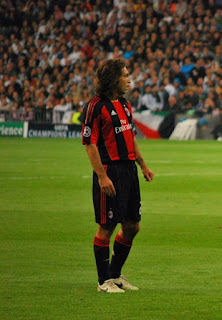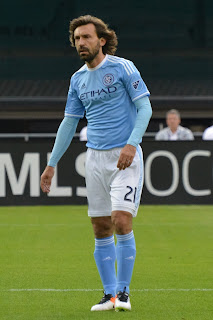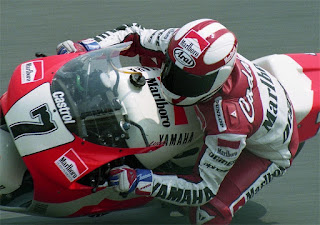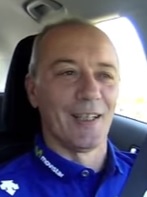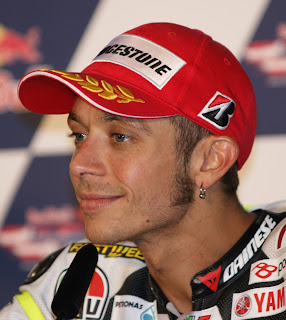Performer best known as Al Bano has sold 165 million records
 |
| Al Bano Carrisi |
The singer Albano Carrisi, better known as Al Bano, was born
on this day in 1943 in Cellino San Marco, a town in Puglia about 30km (19
miles) from Lecce.
He enjoyed considerable success as a solo artist in the late
1960s but became more famous still in Italy and across mainland Europe for his collaboration
with the American singer Romina Power – daughter of the actor Tyrone Power.
They met during the shooting of a film - one of several, mainly romantic comedies and a vehicle for his songs, in which he starred during the 1970s.
They not only formed a professional partnership but were
married for almost 30 years. They twice
performed as Italy’s entry for the Eurovision Song Contest, finishing seventh
on both occasions, and appeared several times at Italy’s prestigious Sanremo
Music Festival, winning the top prize in 1984.
They divorced in 1999 but re-united on a professional basis
in 2013 and when they performed at the Arena di Verona in 2015 before a
sell-out crowd of 11,000 the show was broadcast by the Italian TV network Rai
and shown in seven other countries, with a combined audience estimated at 51
million.
Carrisi’s total record sales as Al Bano are said to be in
the region of 165 million, mainly in Italy, Austria, France, Spain, Romania and
Germany.
 |
| Albano Carrisi with Romina Power in a publicity picture for the 1976 Eurovision Song Contest |
When he was born during the Second World War, his mother, Iolanda
Ottino, named him Albano because at the time his father Carmelo Carrisi was
fighting in Albania for the Royal Italian Army.
The name established a link with the country that remained
with him. In 2016 he was awarded Albanian citizenship.
He made his debut as a singer in 1966 and won the Disco per
l'Estate, an Italian song contest, with Pensando a te in 1968. More hits
followed. His song, Nel sole, sold more than a million copies.
His musical collaboration with Romina Power began soon
afterwards and would last for almost 30 years. They took part in the Eurovision
Song Contest in 1976 in The Hague with the song We'll Live It All Again (Noi lo
rivivremo di nuovo), which finished seventh behind winners The Brotherhood of
Man, from the UK.
They returned in 1985 in Gothenburg with Magic Oh Magic,
which also finished seventh. The contest was won by the Norwegian duo
Bobbysocks.
They entered Sanremo five times and won first prize in 1984
with Ci sarà.
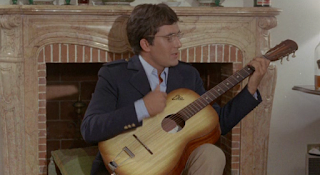 |
| Albano Carrisi in one of his films, Nel sole |
Following their breakthrough hit Sharazan in 1981, which
reached number two in the Italian charts, they had two number ones with Felicità
(1982) and Ci sarà. Their commercial
success continued well into the 1990s, with many records selling in Spain, Germany
and Austria.
Al Bano returned to his solo career in 1996 and to
Eurovision in 2000, providing backing vocals for the Swiss entry (performed in
Italian) La vita cos'è? by Jane Bogaert. After starring with his daughter Romina
Carrisi in the 2005 edition of the Italian reality show L'isola dei Famosi – an
equivalent of I’m a Celebrity, Get Me Out of Here and Celebrity Survivor – he entered
Sanremo in his own right in 2007, finishing second will Nel perdono.
Although he has made his name in the pop world, Carrisi’s tenor voice is of such quality that he is comfortable singing opera, which was his
passion growing up. He released an album
of operatic arias in 1997 and once performed alongside Placido Domingo and José
Carreras as a stand-in for Luciano Pavarotti.
 |
| Carrisi pictured in 2014 |
Even at the age of 74, Carrisi still tours and remains is a
familiar face on Italian television. He had heart surgery in December 2016 and
was admitted to hospital in March this year following a scare but returned to
work after a brief rest, insisting he did not want to disappoint his fans.
He and Romina Power had four children although they suffered
personal tragedy when Yelena Maria, the oldest of their three daughters,
disappeared at the age of 23 in New Orleans in January 1994 while backpacking. Carrisi
never established what happened despite employing several investigators and in
2013 after almost 20 years requested that she be declared as presumed dead.
After his divorce, he had two more children with his
girlfriend, Loredana Lecciso, a former showgirl almost 30 years his junior.
He still lives in Cellino San Marco.
Travel tip:
Cellino San Marco is a town of just under 7,000 people a
little more than 20km (12 miles) south of Brindisi and about 14km (9 miles)
inland from the coast. It was the site of a so-called ‘oven grave’ – a mass
burial place with an entrance resembling that of a stone oven thought to date
back to the Bronze Age. Its main attraction today is the nearby Carrisiland
aquatic theme park.
Travel tip:
The port of Brindisi has been an important city in Italy
since ancient Greek times, mainly because of its natural harbour and its
strategic position on the heel of Italy.
The Romans connected it to Rome via the Appian Way (Via Appia) and it
remains a busy port to this day, the main point of departure for trade with
Greece and the Middle East. Although it
has an industrial feel to parts of the city, there is an attractive promenade
and some interesting buildings, including an 18th-century
reproduction of the 11th century cathedral destroyed in an
earthquake, two castles and the 16th century Renaissance style
Palazzo Granafei-Nervegna.


